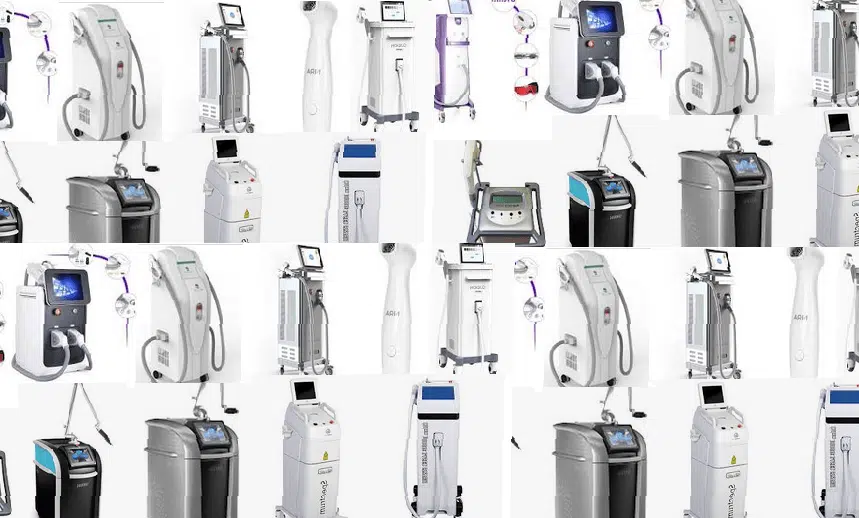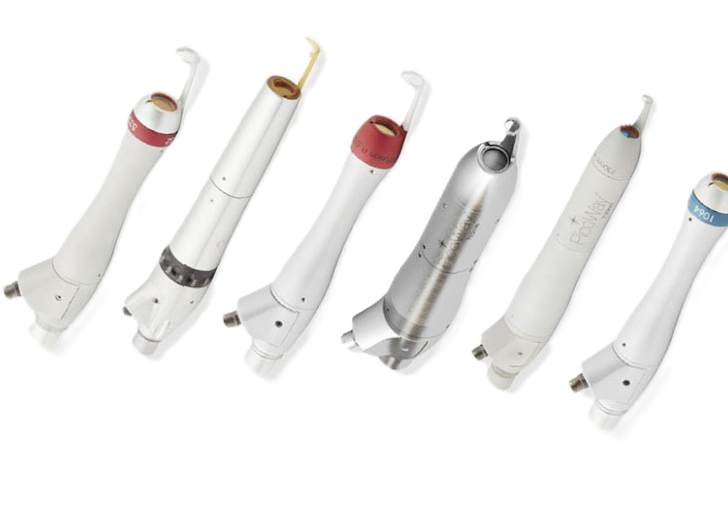2023 -2030
The global aesthetic laser market is experiencing significant growth, driven by various factors such as technological advancements, demographic shifts, and increased awareness. In 2022, the market was valued at approximately $1.4 billion, and it is projected to reach $2.8 billion by 2030, growing at a Compound Annual Growth Rate (CAGR) of 9% from 2023 to 2030.
Aesthetic Laser Market Overview
The aesthetic laser market primarily focuses on medical technology used for enhancing physical appearance, with applications extending beyond medical necessity. Aesthetic lasers employ heat and light to stimulate the skin’s natural collagen production. This technology is vital for addressing aging-related concerns, including wrinkles, fine lines, spots, and more.

Aesthetic Laser Market Dynamics
Several key factors are driving the growth of the aesthetic laser market:
- Increase in the number of licensed medical centers offering aesthetic laser procedures
- Continuous technological advancements in the medical aesthetic industry
- Growing female population, leading to a surge in the adoption of non-invasive aesthetic procedures
- A plethora of products in the pipeline and market potential in untapped emerging economies
Impact of Demographics
Demographic shifts are significantly impacting the market’s growth. The global population aged 60 and over was approximately 710 million in 2020 and is projected to nearly double to 1.3 billion by 2045. Per W.H.O, “by 2030, 1 in 6 people in the world will be aged 60 years or over.” This demographic change has led to a higher demand for anti-aging and skin-tightening laser procedures, known for their effectiveness and minimal downtime. “The field of cosmetic dermatology has recently witnessed unbridled growth in the past several years. Part of this has been due to the increasing popularity of aesthetic treatments in men, who represent a growing patient population”, per Albornoz et.al.
Cosmetic and Aesthetic Laser Market Trends and Insights
Technological Advancements:
The aesthetic laser industry has witnessed substantial technological advancements, enhancing treatment outcomes and patient satisfaction.
Social Media Influence:
The impact of social media has been instrumental in driving aesthetic awareness. People’s desire to appear youthful and attractive, influenced by social media platforms, continues to be a significant trend, especially among younger demographics.
Demographic Shifts:
Demographic changes, particularly the aging population, have contributed to the demand for anti-aging and skin-tightening laser procedures. The desire to minimize signs of aging, coupled with minimal downtime and increased patient comfort, is fueling this market segment.

Impact of COVID-19
The COVID-19 pandemic significantly affected the global aesthetic industry. Lockdowns and restrictions on non-essential procedures led to the temporary shutdown of many aesthetic facilities. As hospitals were restructured to accommodate COVID-19 patients, non-essential procedures, including aesthetic treatments, were canceled, resulting in a decline in revenue for aesthetic companies.
However, the market is gradually recovering. Post-pandemic, there is pent-up demand for non-invasive treatments, with procedures like hair removal and total facial rejuvenation witnessing significant growth. For instance, in 2022, hair removal and total facial rejuvenation treatments experienced growth rates of +80% and +16% compared to 2021, signifying the high adoption of aesthetic treatments globally.
Aesthetic Laser Segment Overview
Product Type
The aesthetic laser market encompasses several product types, including CO2 lasers, erbium lasers, pulsed-dye lasers, IPL (intense pulsed light), and others. CO2 lasers dominated the global market in 2022, and they are expected to maintain their dominant position due to their precise and high-speed industrial processes. The demand for CO2 lasers, especially in healthcare and medicine applications, is increasing.
Application
The applications of aesthetic lasers are diverse and include skin resurfacing, hair removal, tattoo removal, and more. Hair removal was the dominant segment in 2023, primarily driven by increased demand among the female population. In 2022, a substantial number of laser hair removal procedures were performed globally, further highlighting the segment’s growth.
Aesthetic Laser Company Key Market Players
Key market players in the global aesthetic laser market are instrumental in driving innovation, product development, and market growth. Their strategies include mergers and acquisitions, geographical expansion, and obtaining regulatory approvals in emerging economies. Let’s explore some of the leading aesthetic laser companies in the market:
Lynton Laser
- Market Share: Approximately $100 million
- Focus: Lynton Laser specializes in cutting-edge laser and intense pulsed light (IPL) technologies, offering a wide range of aesthetic treatments.
Aerolase Corp.
- Market Share: Approximately $150 million
- Focus: Aerolase Corp. is known for its commitment to creating non-invasive aesthetic laser solutions, with a growing presence in the market.
Candela Corporation
- Market Share: Approximately $330 million
- Focus: Candela Corporation manufactures a variety of aesthetic laser devices, gaining popularity for their efficacy and safety.
Cynosure Inc.
- Market Share: Approximately $270 million
- Focus: Cynosure Inc., a division of Hologic, Inc., is a key player offering a range of non-invasive aesthetic solutions, contributing to market growth.
Solta Medical Inc.
- Market Share: Approximately $180 million
- Focus: Solta Medical, part of Bausch Health Companies Inc., has been providing innovative aesthetic solutions and is showing growth.
Lutronic
- Market Share: Approximately $150 million
- Focus: Lutronic specializes in laser technologies for various aesthetic applications and continues to be a significant player in the market.
Sciton Inc.
- Market Share: Approximately $100 million
- Focus: Sciton Inc. is known for its commitment to advanced laser and light technology in the aesthetic industry.
Cutera
- Market Share: Approximately $270 million
- Focus: Cutera provides innovative laser and energy-based aesthetic systems, contributing to market growth.
Lumenis
- Market Share: Approximately $400 million
- Focus: Lumenis is a renowned global leader in medical and aesthetic laser technology, offering a wide range of solutions.
Alma Lasers
- Market Share: Approximately $170 million
- Focus: Alma Lasers focuses on medical and aesthetic energy-based devices, contributing to market expansion.
These key market players collectively contribute to the growth and innovation within the global aesthetic laser market.
Recently, there appears to be an increase in the utilization of aesthetic laser rental companies. However, data is not yet available to report.
The market share of these key players may vary over time due to market dynamics, mergers, acquisitions, and technological advancements. Their ability to adapt to changing market trends and customer demands will be critical in maintaining their competitive edge.
Types of Aesthetic Lasers
The field of aesthetic lasers has seen significant advancements over the years, leading to a diverse range of laser technologies designed to address various cosmetic and medical concerns. These lasers differ in their mechanisms of action, applications, and the specific conditions they target. In this section, we’ll explore the different types of aesthetic lasers and their respective uses.
- CO2 Lasers:
- Carbon Dioxide (CO2) lasers are among the most versatile and widely used aesthetic lasers. They produce a concentrated beam of light that is absorbed by water in the skin cells. This absorption causes the water to evaporate, effectively removing a thin layer of skin. This process, known as ablation, is used for skin resurfacing to address wrinkles, scars, and age spots.
- CO2 lasers are also effective for removing skin lesions, warts, and precancerous growths. They promote collagen production, resulting in skin tightening and rejuvenation. However, the recovery time for CO2 laser treatments is longer compared to other non-ablative lasers.
- Erbium Lasers:
- Erbium lasers are another type of ablative laser used for skin resurfacing. They are often preferred for their precision and effectiveness in addressing fine lines, age spots, and superficial scars. Erbium lasers cause minimal damage to surrounding tissues and result in quicker recovery times compared to CO2 lasers.
- These lasers are suitable for individuals with lighter skin tones and those seeking less invasive procedures. Erbium lasers offer excellent results in terms of skin rejuvenation.
- Pulsed-Dye Lasers:
- Pulsed-dye lasers use a concentrated beam of yellow light to target blood vessels in the skin. They are primarily used for treating vascular conditions such as spider veins, rosacea, and port-wine stains. The laser’s energy is absorbed by hemoglobin in the blood vessels, causing them to coagulate and eventually fade.
- These lasers are less invasive than ablative lasers and are known for their precision in vascular lesion treatment. Recovery time is minimal, making them a preferred choice for individuals seeking to address specific vascular concerns.
- IPL (Intense Pulsed Light) Lasers:
- Intense Pulsed Light (IPL) devices are often referred to as lasers, although they technically use a broad spectrum of light rather than a focused laser beam. IPL technology emits multiple wavelengths of light, making them versatile for various skin conditions.
- IPL lasers are commonly used for hair removal, photofacials, and treating pigmentation issues like sunspots and freckles. They can also improve skin texture and tone by stimulating collagen production. IPL treatments are generally less aggressive than ablative lasers, resulting in shorter recovery times.
- Fractional Lasers:
- Fractional lasers create microscopic treatment zones in the skin, leaving surrounding tissue intact. This approach promotes faster healing and reduced downtime. Fractional lasers can be either ablative or non-ablative, depending on their specific design.
- These lasers are used for skin resurfacing, scar revision, and wrinkle reduction. They encourage collagen production, resulting in skin tightening and improved texture. Fractional lasers are particularly popular for addressing acne scars and fine lines.
- Nd:YAG Lasers:
- Neodymium-doped Yttrium Aluminum Garnet (Nd:YAG) lasers produce longer wavelengths of light that can penetrate deeper into the skin. They are often used for hair removal, as their extended wavelengths target hair follicles more effectively, making them suitable for all skin types.
- Nd:YAG lasers are also used in non-ablative treatments for skin tightening and rejuvenation. They can improve skin laxity and address pigmentation issues.
Each type of aesthetic laser has its unique characteristics and is chosen based on the specific needs of the patient. The choice of laser technology depends on factors such as skin type, the severity of the condition, and the desired results. Advancements in laser technology continue to expand the range of treatment options available to individuals seeking aesthetic and cosmetic enhancements. For more information on the types of lasers, see our Medical Aesthetic Laser Equipment guide.
Aesthetic Laser Market Report Conclusion
In conclusion, the global aesthetic laser market is poised for remarkable growth, underpinned by technological advancements, increased aesthetic awareness driven by social media, and shifting demographics. Despite the initial setbacks caused by the COVID-19 pandemic, the market is showing signs of recovery, with a clear demand for non-invasive treatments. A significant focus on innovation, technological advancement, and expansion by key market players is expected to further bolster the market’s growth prospects.